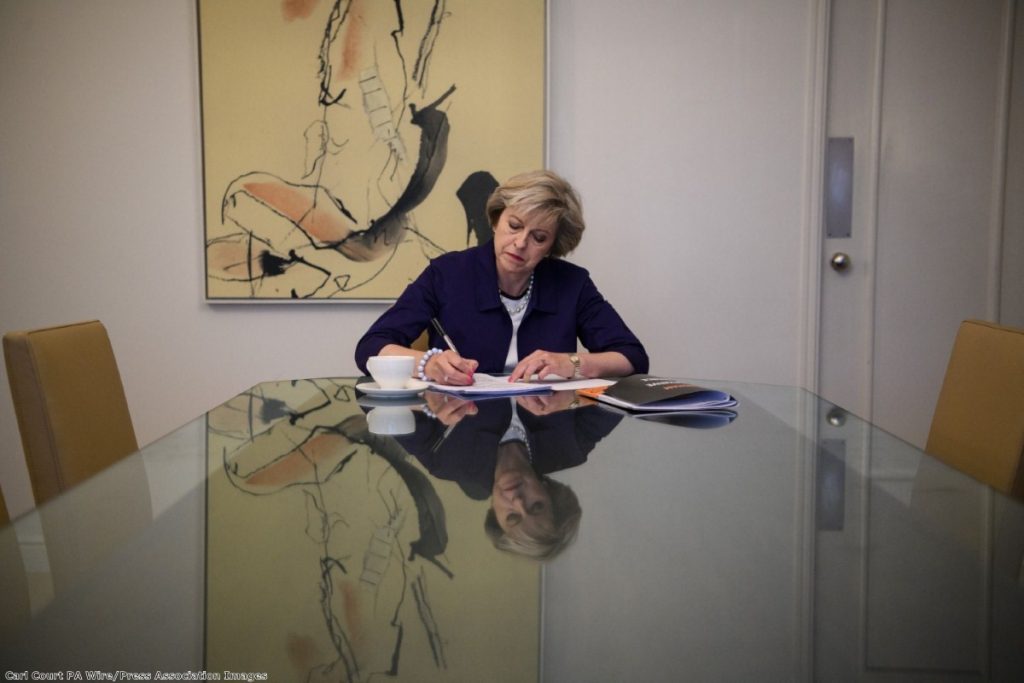By Tim Bale
One of the many paradoxes about British politics right now is the fact that those who belong to the party which formally grants its members least say over policy can plausibly claim to have exercised the most influence on us all in recent years.
Unlike their counterparts in the Labour party, the SNP, and especially the Lib Dems, rank-and-file members of the Conservative party still don’t get to vote on its policy platform. Yet they have arguably played a big part in the Tories' transformation from 'the party of Europe' to the bringer-in of Brexit.
By making their growing hostility to the EU clear, week-in-and-week-out, to their MPs, and by selecting more and more candidates who shared that same hostility, they helped push David Cameron into promising a referendum and then deserted him in droves when it was finally held.


According to YouGov, Tory voters broke 61-39 for Leave in June 2016. If Mr Cameron was expecting a little more loyalty from his own members, he was severely disappointed. Research conducted with my colleagues Paul Webb and Monica Poletti of the ESRC-funded Party Members Project based at Queen Mary University of London and Sussex University found that 70% of them let their leader down and voted Leave.
Since then, Conservative grassroots members' views on Europe appear only to have hardened – and, as a new report from the Project published yesterday by the Mile End Institute shows, they are one of the many things that set the Tory rank and file apart from the members of other political parties.
While at least eight out of ten Labour, SNP and Lib Dem grassroots members favour a second referendum on Europe, just one in ten Tory members agrees. Nine out of ten members of the other parties support continued membership of the single market and the customs union, but only a quarter of grassroots Tories would like to see such a soft Brexit.
Tory members views on economic issues are also strikingly different from those of their counterparts in other parties. On the economy, 11% of Tory members agree that austerity has gone too far, compared with 98% of Labour members, 93% of SNP members, and 75% of Lib Dem members. And on the question of economic fairness, only 19% of Tory members agree that ordinary working people don't get their fair share of the nation's wealth, compared with 97% of Labour members, 95% of SNP members and 79% of Lib Dem members.
It's the same story on social issues: Conservative members hold far more authoritarian attitudes than members of the other three parties. Just over half of Tory party members support the death penalty compared to under ten per cent of Labour and Lib Dem members and a fifth of SNP members. Three-quarters agree that young people don't have enough respect for traditional British values – a view shared by only a fifth of the members of the other parties in the study.
An overwhelming majority of Tory members (84%) believe that schools should teach children to obey authority, compared with 31% of Labour members and 38% of SNP and Lib Dem members. Tory members are also considerably more sceptical about the benefits of immigration – and they are outliers on gay marriage, with only four in ten supporting it compared to at least eight out of ten members of other parties.
Part of the explanation for these marked differences in attitudes and ideology may lie in demography. Members of all four parties are more likely to be male, older, middle-class, and white than the average Briton – but Tory members are even more unrepresentative than their counterparts in the other parties. For instance, 71% are men, compared with 53% of Labour members, 57% of SNP members and 63% of Lib Dems.
The average age of party members is 57 for the Tories, 54 for the SNP, 53 for Labour, and 52 for the Liberal Democrats – and just one in 20 party members in the UK is aged between 18-24. But the averages disguise some significant differences – not least that 44% of Tory members are aged 65 or over, compared with 29 per cent of Labour members, 30% of Lib Dem members and 32% of SNP members.
We should be careful, however, not to assume that Tory members are stranded so far to the ageing, white, authoritarian, eurosceptic right that they are completely unrepresentative of the party's voters. After all, the party won well over 40% support at the last election, with a lot of it coming from older and white British voters, from Leavers, and from those with small-c Conservative values and a belief in a smaller, less active state.
The question is how the Conservatives will cope when, as seems likely, the proportion of the electorate which share these characteristics begins to shrink. A party's members constitute an important part of its sales force and its public face. They need to be numerous enough, young enough, diverse enough, open-minded enough, and tech-savvy enough, to ensure that it can come up with candidates and a ground campaign capable of appealing to 21st century Great Britain.
None of the countries' parties should be complacent on this score – and all have their quirks: even after the 2017 election, the average Labour member, for instance, is almost certainly more of a well-educated, well-heeled liberal lefty than the average Labour voter.
Yet, as things currently stand, the Tories probably have more to worry about than their main rivals. Whether they can do much to alter the situation and attract a different kind of member in the near future remains to be seen.
Tim Bale teaches politics at Queen Mary, University of London, and writes for the Financial Times, the Guardian, and the Telegraph. You can follow him on Twitter at @ProfTimBale.
The opinions in politics.co.uk's Comment and Analysis section are those of the author and are no reflection of the views of the website or its owners.

